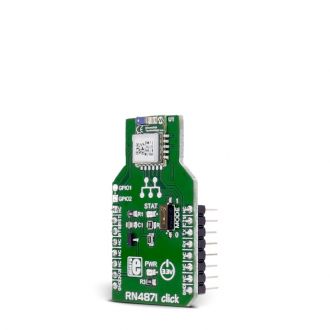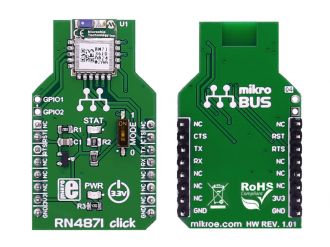
We strongly encourage users to use Package manager for sharing their code on Libstock website, because it boosts your efficiency and leaves the end user with no room for error. [more info]

Rating:
Author: MIKROE
Last Updated: 2019-01-15
Package Version: 1.0.0.1
mikroSDK Library: 1.0.0.0
Category: BT/BLE
Downloaded: 7495 times
Not followed.
License: MIT license
RN4871 click carries the RN4871 Bluetooth® 4.2 low energy module from Microchip. The click is designed to run on a 3.3V power supply. It communicates with the target microcontroller over UART interface, with additional functionality provided by the following pins on the mikroBUS™ line: RST, CS and INT.
Do you want to subscribe in order to receive notifications regarding "RN4871 click" changes.
Do you want to unsubscribe in order to stop receiving notifications regarding "RN4871 click" changes.
Do you want to report abuse regarding "RN4871 click".

